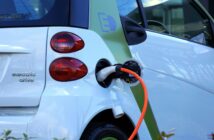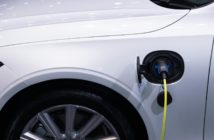As the mobility industry continues to push for full electrification, the need for long-term sustainable battery solutions becomes even more apparent, Movemnt’s Nicole Lumley reports

Although electric cars are cleaner and more sustainable on the road, we need to be thinking about what powers these vehicles and how suppliers will meet the demands that electrification brings. 
As of now, the anode of the battery material is 100% graphite, which can either be found in its natural form as a rock or is a synthetic biproduct of petroleum. While graphite is arguable a great anode, almost 100% of it is produced in China and therefore, a sustainable solution is needed closer to home. 
The aim is to replace the material within the anode with a more sustainable product. For example, some companies are testing to replace graphite with silicone. However, what Stora Enso is working on is replacing these materials with materials you can grow. 
ÔÇťRight now, we have got to the point where conventional technologies arenÔÇÖt good enough, and we probably donÔÇÖt have enough of them. We need alternative solutions, especially now with the sustainability challenge that we have in place,ÔÇŁ says SVP & Head of Innovation Lauri Lehtonen.
ÔÇťI think we are at a tipping point where we need to look at solutions that are, what I like to call, ÔÇśliving above the groundÔÇÖ, things that you grow and are doing good things at the same time. We need to put these materials that nature has created for us to good use.ÔÇŁ
Lehtonen explains that the fundamental behind this product is the tree, as while it photosynthesises, it is storing carbon and creating many more materials in the process. One area is of great interest, as it is particularly rich in carbon, is lignin. 
So how does this fit into the ever-growing battery industry we have already? Lithium is sought after in millions of tons, and it is very hard to extract. The solution for this issue is yet undiscovered and if nothing changes, we will be too dependent on supply chains to meet the demand. 
ÔÇťThe door opener is supply chains that are next door, that have a material that actually grows back, this is not something that depletes, this is something that grows back every year,ÔÇŁ Lehtonen says.┬á
ÔÇťThe second door opener is that this material does not run out. It grows back to an extent where our estimations are for the 40 million cars, the number of anodes you will need is only from 30% of trees.ÔÇŁ┬á
The solution is fully dependent on the fact that they grow more trees than they use. 
ÔÇťEverything we use is just a portion of the growth area, so this does not mean we are taking trees that will never grow back. We will only use a small portion of the growth,ÔÇŁ says Lehtonen.
The ecosystem of battery technology will need many different types of solutions, and as a community the mobility industry has a duty to bring forward more sustainable solutions to strive for a better change. 







